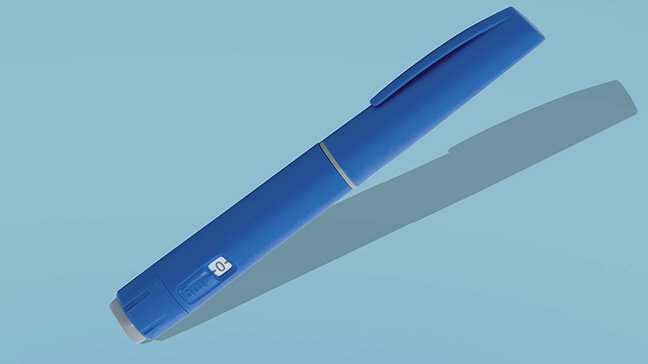- Diseases
- Acoustic Neuroma (14)
- Adrenal Gland Tumor (24)
- Anal Cancer (68)
- Anemia (2)
- Appendix Cancer (16)
- Bile Duct Cancer (26)
- Bladder Cancer (72)
- Brain Metastases (28)
- Brain Tumor (230)
- Breast Cancer (720)
- Breast Implant-Associated Anaplastic Large Cell Lymphoma (2)
- Cancer of Unknown Primary (4)
- Carcinoid Tumor (8)
- Cervical Cancer (158)
- Colon Cancer (164)
- Colorectal Cancer (114)
- Endocrine Tumor (4)
- Esophageal Cancer (44)
- Eye Cancer (36)
- Fallopian Tube Cancer (8)
- Germ Cell Tumor (4)
- Gestational Trophoblastic Disease (2)
- Head and Neck Cancer (8)
- Kidney Cancer (126)
- Leukemia (344)
- Liver Cancer (50)
- Lung Cancer (288)
- Lymphoma (284)
- Mesothelioma (14)
- Metastasis (30)
- Multiple Myeloma (98)
- Myelodysplastic Syndrome (60)
- Myeloproliferative Neoplasm (4)
- Neuroendocrine Tumors (16)
- Oral Cancer (100)
- Ovarian Cancer (172)
- Pancreatic Cancer (164)
- Parathyroid Disease (2)
- Penile Cancer (14)
- Pituitary Tumor (6)
- Prostate Cancer (144)
- Rectal Cancer (58)
- Renal Medullary Carcinoma (6)
- Salivary Gland Cancer (14)
- Sarcoma (236)
- Skin Cancer (296)
- Skull Base Tumors (56)
- Spinal Tumor (12)
- Stomach Cancer (62)
- Testicular Cancer (28)
- Throat Cancer (92)
- Thymoma (6)
- Thyroid Cancer (96)
- Tonsil Cancer (30)
- Uterine Cancer (80)
- Vaginal Cancer (16)
- Vulvar Cancer (20)
- Cancer Topic
- Adolescent and Young Adult Cancer Issues (20)
- Advance Care Planning (10)
- Biostatistics (2)
- Blood Donation (18)
- Bone Health (8)
- COVID-19 (362)
- Cancer Recurrence (120)
- Childhood Cancer Issues (120)
- Clinical Trials (632)
- Complementary Integrative Medicine (26)
- Cytogenetics (2)
- DNA Methylation (4)
- Diagnosis (230)
- Epigenetics (6)
- Fertility (62)
- Follow-up Guidelines (2)
- Health Disparities (14)
- Hereditary Cancer Syndromes (124)
- Immunology (18)
- Li-Fraumeni Syndrome (8)
- Mental Health (118)
- Molecular Diagnostics (8)
- Pain Management (62)
- Palliative Care (8)
- Pathology (10)
- Physical Therapy (18)
- Pregnancy (18)
- Prevention (912)
- Research (396)
- Second Opinion (74)
- Sexuality (16)
- Side Effects (608)
- Sleep Disorders (10)
- Stem Cell Transplantation Cellular Therapy (216)
- Support (402)
- Survivorship (322)
- Symptoms (184)
- Treatment (1788)
Myxoid liposarcoma: Diagnosis, treatment and prognosis
4 minute read | Published September 05, 2024
Medically Reviewed | Last reviewed by an MD Anderson Cancer Center medical professional on September 05, 2024
Myxoid liposarcoma is a rare cancer that accounts for about 30% to 40% of liposarcoma cases. This makes it the second most common type of liposarcoma.
Here, I’ll share more about myxoid liposarcoma, including symptoms, prognosis and why early diagnosis is important.
Myxoid liposarcoma growth rates vary
Myxoid liposarcoma gets its name based on how the tumor cells look under a microscope. The cells produce a myxoid, or mucus-like, substance that fills most of the cells. Some myxoid liposarcomas grow slowly.
Sometimes, you may hear myxoid liposarcoma called myxoid/round cell liposarcoma. This refers to tumors with more cells, called round cells. These tumors tend to grow faster, making them more aggressive.
Myxoid liposarcoma usually starts in the limbs
Myxoid liposarcoma most often starts in the limbs, usually the legs. Sometimes, tumors appear in the chest or abdominal area.
The most common symptom is a painless lump
Myxoid liposarcoma can occur in people of any age, but it is mostly found in people ages 30 to 40.
The main symptom is a visible lump in the affected area. The lump is usually painless, but you might feel pain if it’s in a location where it causes pressure or pinches a nerve.
It’s important to get a correct diagnosis of myxoid liposarcoma
Some people have myxoid liposarcoma for a while and don’t know it. This is because a lump may not appear until the tumor has grown large enough to cause concern.
If the lump is not causing any pain, some people tend to ignore it. But it’s important to see a doctor if you notice any new or unusual lumps.
Your doctor will do some form of imaging, such as an ultrasound, X-ray, CT scan or MRI. If a mass is detected, your doctor needs to order a biopsy. If your doctor doesn’t order a biopsy after scans show a mass, they might miss the diagnosis. In some cases, for instance, myxoid liposarcoma is misdiagnosed as something benign, like a hematoma or a lipoma. Doctors may try to drain it or remove some of it through surgery. If they don’t remove the entire tumor, the cancer can spread and increase the chance of recurrence.
Instead, with a biopsy, they can test the tissue and determine if it’s cancer. If it is myxoid liposarcoma, seek care at a comprehensive cancer center like MD Anderson which has doctors who specialize in treating this type of cancer.
Myxoid liposarcoma treatment is unique to each patient
Once you have a myxoid liposarcoma diagnosis, your doctors will develop your treatment plan based on the tumor’s grade, size and stage.
Treatment for myxoid liposarcoma may include surgery, radiation therapy and/or chemotherapy.
Surgery
About 50% of the time, we find myxoid liposarcoma before it has spread. We call this localized cancer. In these cases, surgery is the most common treatment. We want to remove the tumor with a rim of normal tissue surrounding it.
Radiation therapy
Radiation therapy may be used before surgery to shrink a tumor that has not spread and to lower the risk of recurrence. It can also be used after surgery to lower the risk of recurrence.
Chemotherapy
Chemotherapy may be used for larger tumors, more advanced myxoid liposarcoma or cancer that has come back after surgery.
We may use chemotherapy and radiation therapy before surgery for localized tumors. Chemotherapy may be used in advanced myxoid liposarcoma to control the tumors for as long as possible when surgery is not an option.
If the cancer has come back in the same spot or spread to only one area, we usually use chemotherapy to shrink the tumor followed by surgery, if possible.
Myxoid liposarcoma can spread to other parts of the body
Myxoid liposarcoma typically spreads to other fat-bearing areas of the body, such as bone marrow and the abdominal cavity. It can also spread to the lungs and other organs.
With aggressive treatment, localized disease has good prognosis
The prognosis for patients with myxoid liposarcoma can depend on many factors, including:
- tumor grade
- tumor size
- type of treatment
We use an aggressive combination of radiation therapy and chemotherapy for patients with larger tumors that have not spread. We’ve seen great results with this approach with the risk of cancer returning as low as 10% in these patients.
Prognosis for patients with metastatic myxoid liposarcoma can also depend on how well the cancer responds to treatment. Some chemotherapies can work for a long time. It’s important to talk to your doctor about your situation.
T cell receptor therapy is being researched as treatment option
Through clinical trials, we’re exploring whether we can treat some patients with myxoid liposarcoma with a type of immunotherapy called T-cell therapy or NK-cell therapy. These novel treatments use engineered receptors to modify a patient’s T-cells or NK cells so that these cells can recognize certain tumor-specific antigens in cancer cells and destroy them. This research will help us find better ways to target these cancer cells.
We encourage eligible patients to enroll in these clinical trials to help advance myxoid liposarcoma treatment. Emerging therapies like these will allow us to advance myxoid liposarcoma treatment so we can help more patients.
Neeta Somaiah, M.D., is a sarcoma medical oncologist at MD Anderson.
Request an appointment at MD Anderson online or call 1-844-615-2664.
Related Cancerwise Stories

About 50% of the time, we find myxoid liposarcoma before it has spread.
Neeta Somaiah, M.D.
Physician





